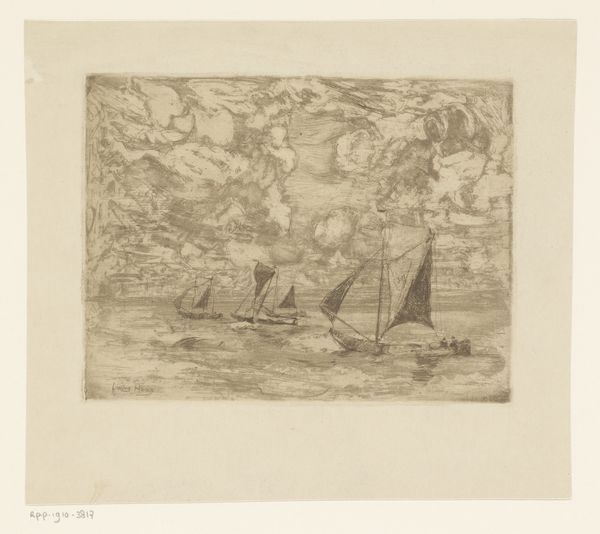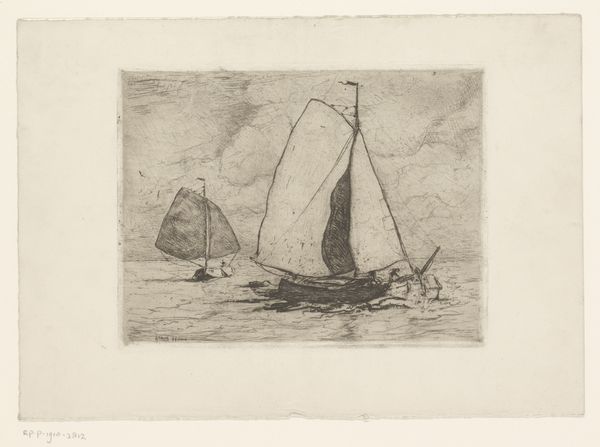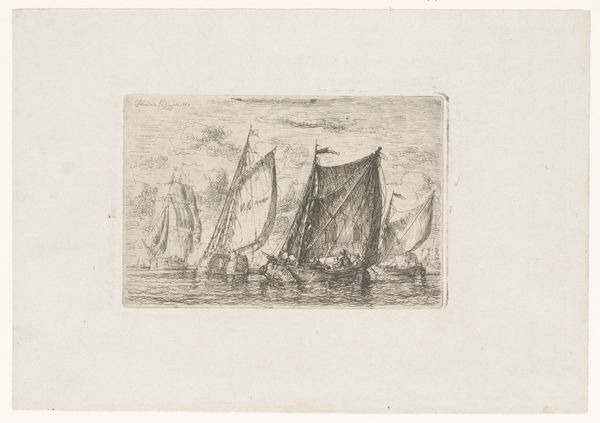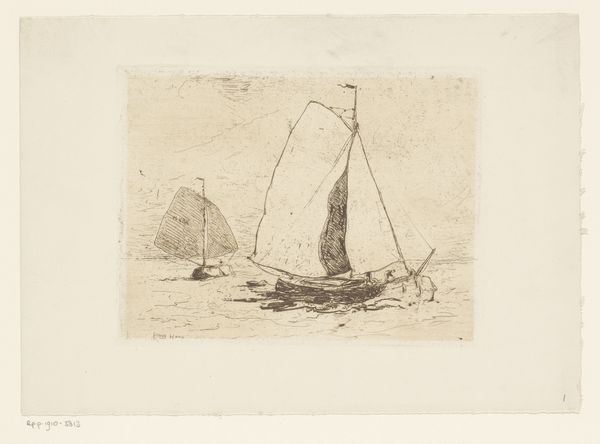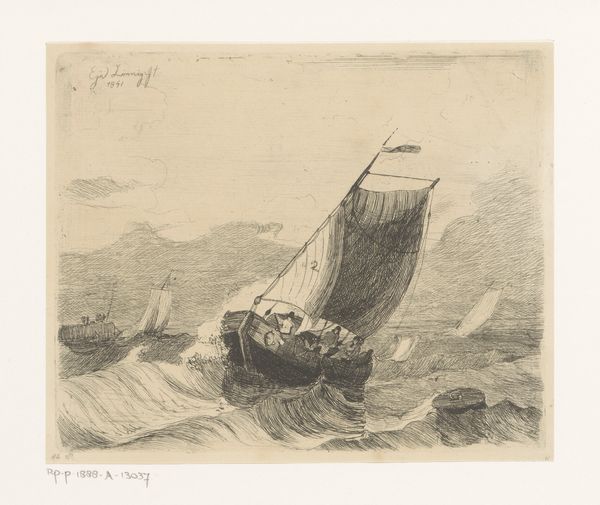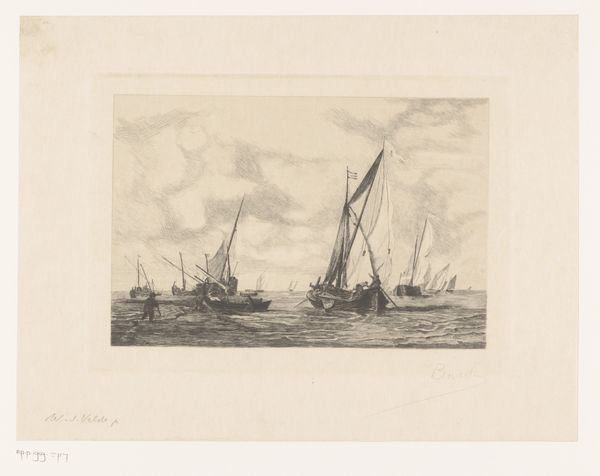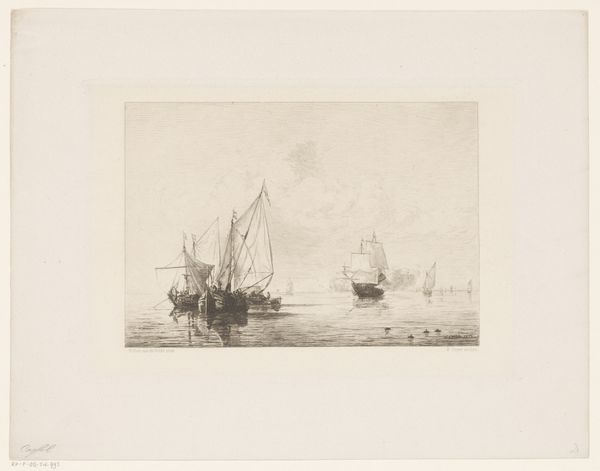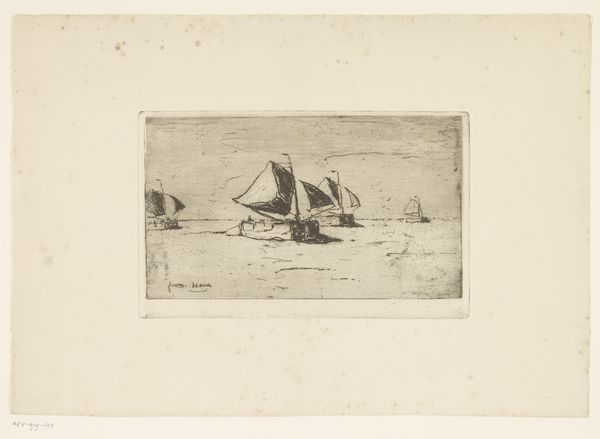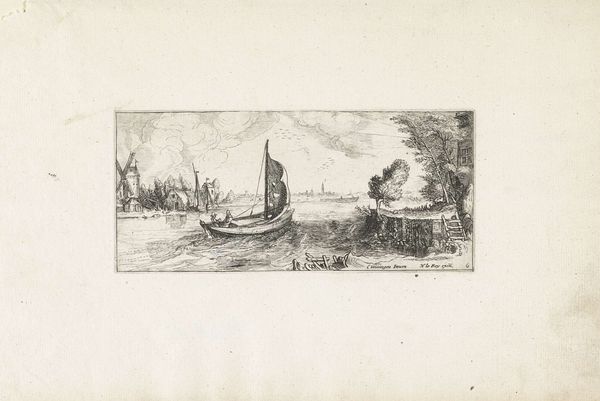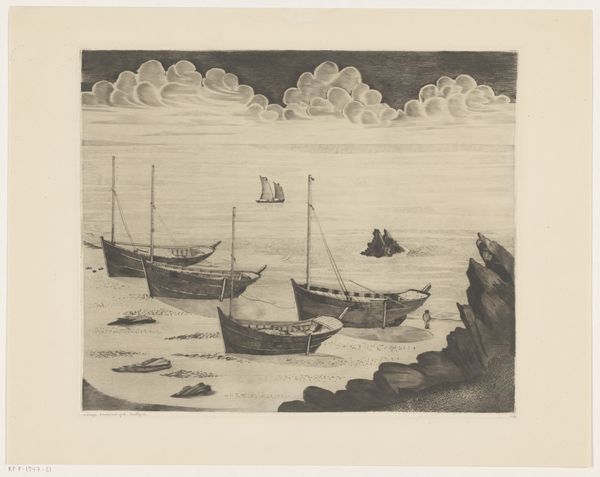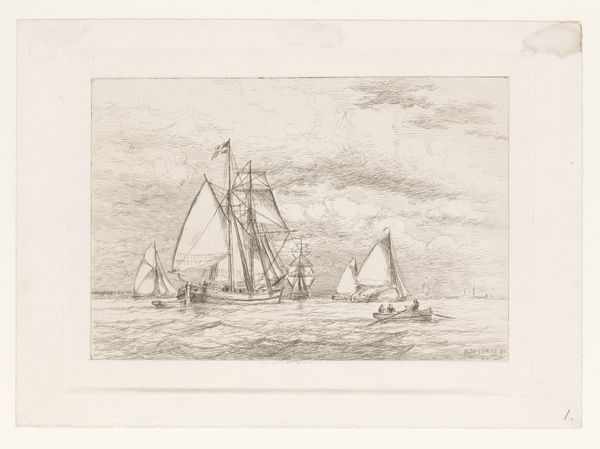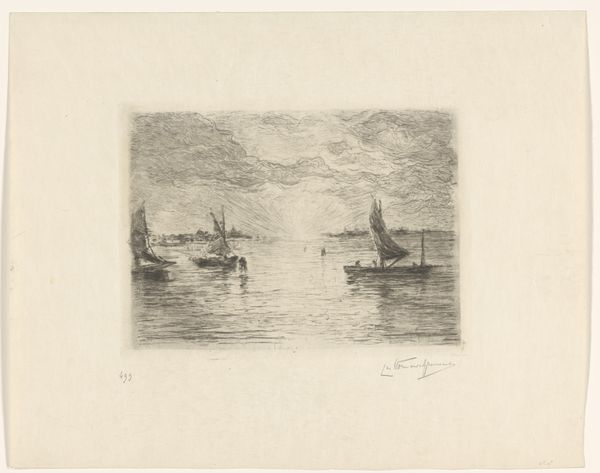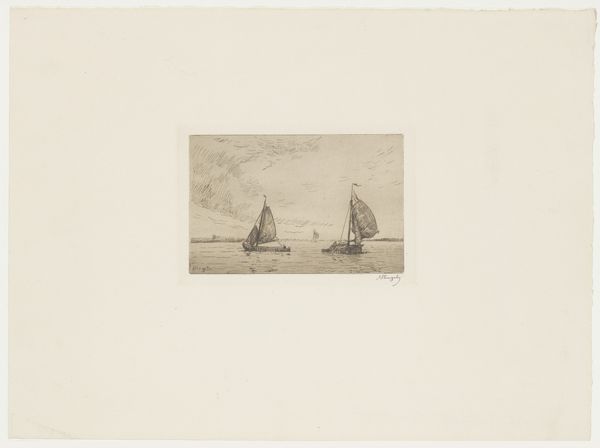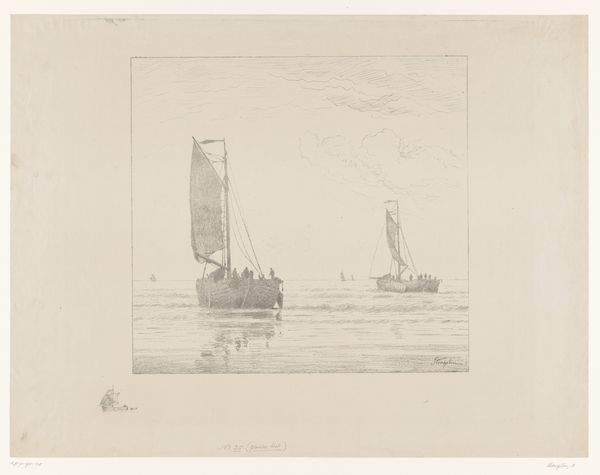
print, etching
# print
#
impressionism
#
etching
#
landscape
#
realism
Dimensions: height 160 mm, width 209 mm
Copyright: Rijks Museum: Open Domain
Curator: Before us is "Three Sailing Ships," an etching by Frans Hens, likely created between 1866 and 1910. The piece is quite evocative, capturing a certain dynamism in its relatively small format. Editor: My initial impression is one of tranquility, despite the apparent roughness of the sea. The monochrome palette lends it a nostalgic, almost dreamlike quality. The composition, though simple, feels quite balanced. Curator: Indeed. Let's consider how Hens achieves this balance. Notice the positioning of the three ships—leading the eye diagonally into the distance. The darkest ship is in the foreground, establishing depth through diminishing scale. It is reminiscent of some classic impressionist compositional approaches. Editor: And the materiality of the etching itself. The texture! Look closely, and you can see the mark-making, the labor involved in creating that atmosphere. Those churning clouds, all produced with painstaking labor using various metal tools. The clouds aren’t mere background, they suggest the harsh realities of seafaring work. The way it emphasizes how the materials, like the ship's sails, are pushed and pulled by elements far beyond their control. Curator: A relevant point. The use of line and tone builds a cohesive visual field. There is a semiotic weight to that materiality and tonal balance and play: a sort of binary structure to convey both presence and absence of labor through that singular etching process. It makes it seem complete. Editor: Hens doesn’t romanticize these ships; rather, he seems to show us the world that they are sailing within. Did Hens likely work on more pieces like these I wonder? I wonder if it’s reflective of labor concerns in his contemporary culture and art world. Curator: Perhaps. It certainly invites such interpretations. Considering his other works, there is consistent structural acuity that reflects his period's aesthetic concerns with formalism while creating unique works. Editor: Overall, viewing the material processes along side the structural approaches, creates an intriguing insight into how the everyday objects could provide artistic depth and also material engagement through repetitive labor and material use.
Comments
No comments
Be the first to comment and join the conversation on the ultimate creative platform.
